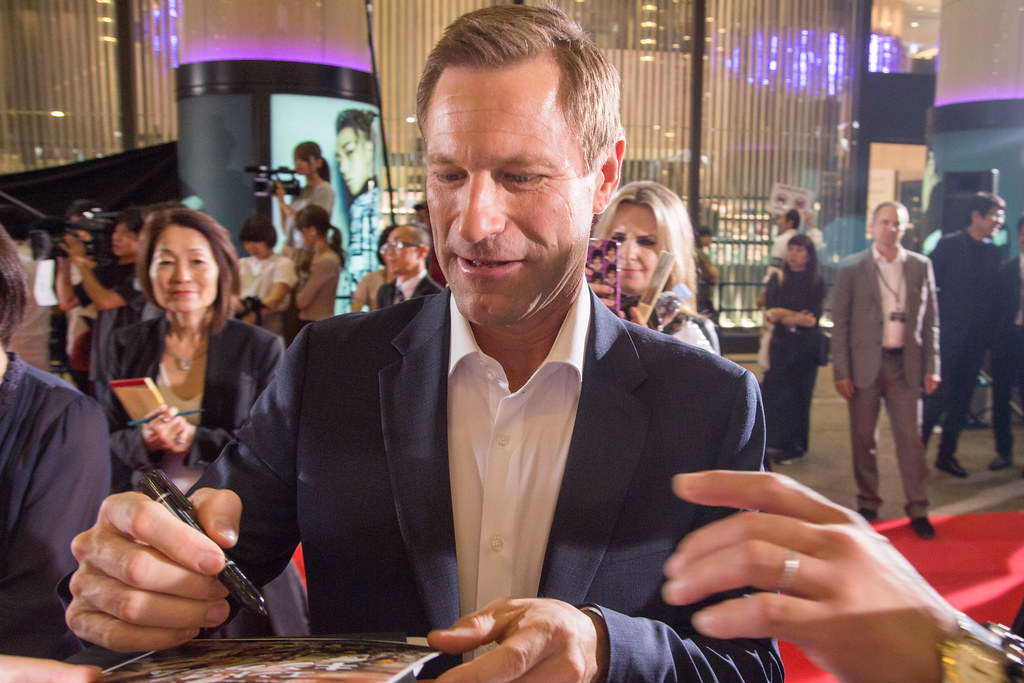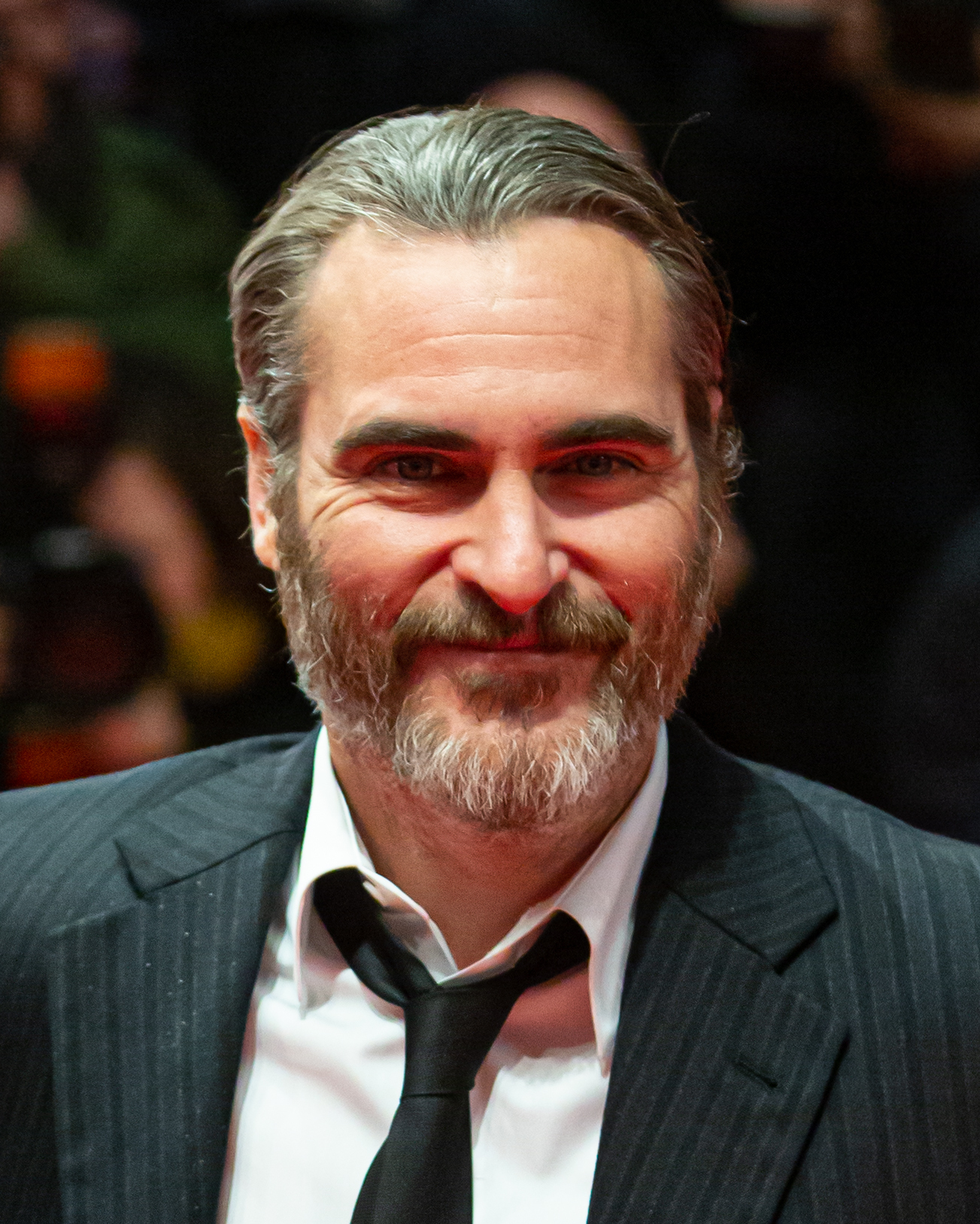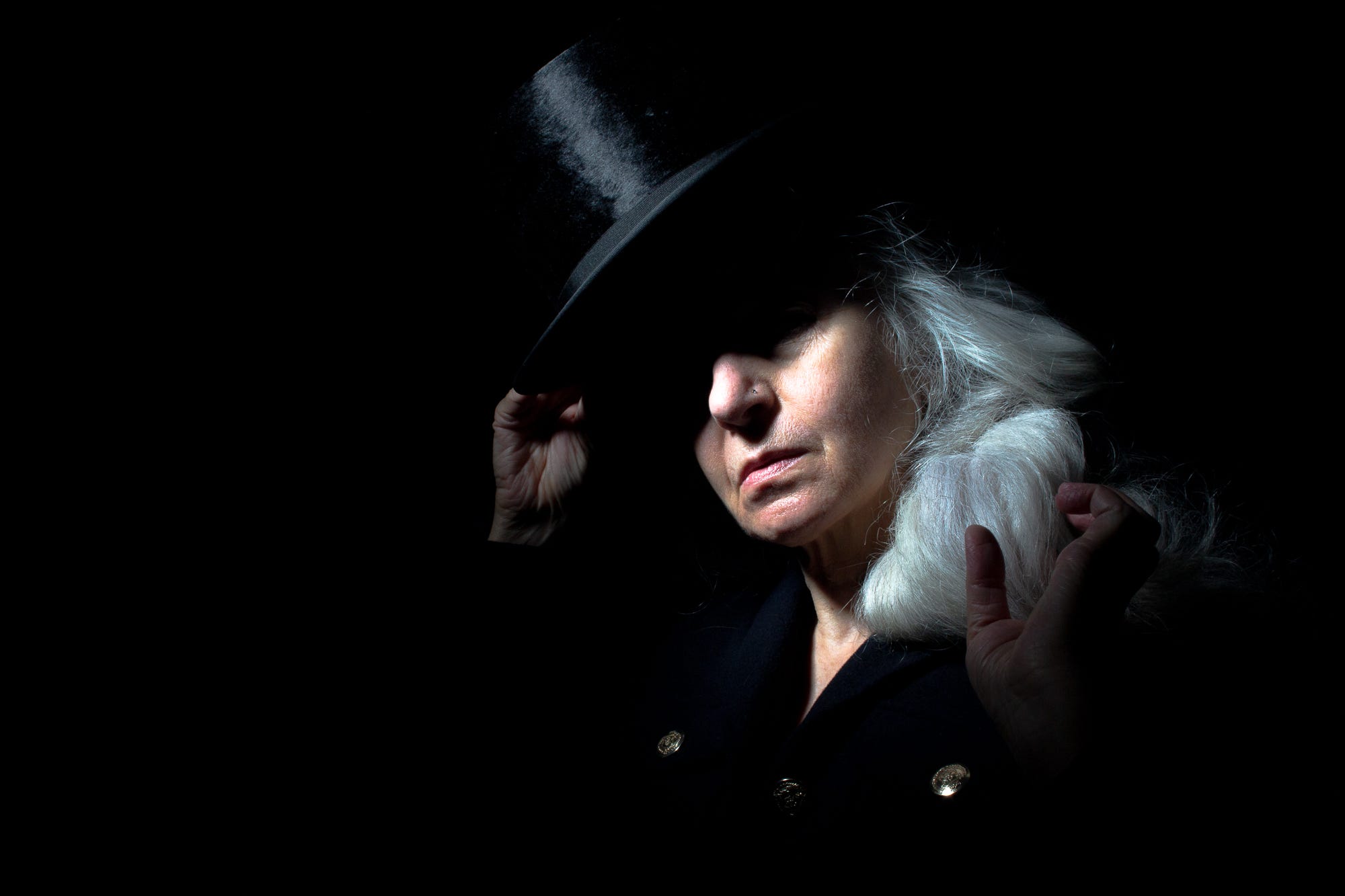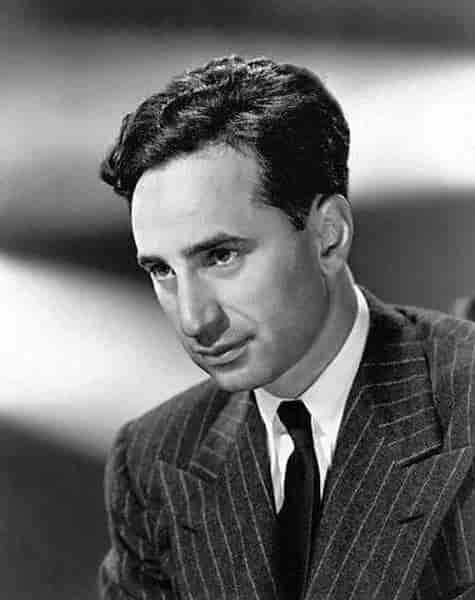
Method acting, a term that often evokes images of intense dedication and transformative performances, has its deep roots in the revolutionary work of Russian theatre practitioner Konstantin Stanislavski. His “system,” developed in the early 20th century, aimed to train actors to deliver emotionally expressive, nuanced, and naturalistic performances by truly experiencing the emotional and psychological processes of their characters. This approach, which emphasizes the “art of experiencing” rather than merely representing, laid the foundational groundwork for what would evolve into the varied and sometimes extreme practices known today as method acting.
Despite its vast and undeniably positive influence on contemporary film and theatre, the term “method acting” carries a troubled reputation. It frequently conjures up the image of actors so deeply lost in their roles that they blur the lines between fiction and reality, leading to behaviors that can seem, to an outsider, anything from “dangerous” to “overrated.” This controversial aspect often stems from certain techniques, such as “affective memory,” where actors are encouraged to recall personal, sometimes traumatic, memories to build empathy with their character’s emotional states.
While much of the alarm surrounding method acting might be unfounded, and its techniques continue to be taught and utilized by successful performers, its divisive nature persists. This article will delve into the contentious world of method acting, exploring its historical underpinnings and then highlighting specific, often extreme, instances where prominent actors have pushed the boundaries of their craft. We will examine the techniques employed, the personal sacrifices made, and the resulting on-set drama and critical discussions that inevitably follow when an actor goes “the extra mile” by totally immersing themselves in their character, sometimes even long after shooting has finished.

1. **Jared Leto in Suicide Squad (2016)**Jared Leto has garnered significant notoriety for his unwavering commitment to method acting, a dedication evident in many of his roles. Prior to his portrayal of the Joker in “Suicide Squad,” Leto famously gained 67 pounds for “Chapter 27” to embody John Lennon’s murderer. For the vampire film “Morbius,” he reportedly refused to break character, limping on crutches even off-camera, which led to production delays due to his 45-minute bathroom breaks. Producers eventually intervened, striking a deal for him to use a wheelchair to save time and money on set.
His approach to playing the Joker, however, propelled his unusual acting skills to a new level of extreme. Leto insisted that he be addressed as “Mister J” throughout the production. He aimed to “create an element of spontaneity” among the cast, which manifested in truly bizarre ways. His co-stars, including Cara Delevingne and Margot Robbie, received unsettling presents such as “used condoms” and “anal beads” from him.
The controversial gifts didn’t stop there. Viola Davis, another cast member, claimed that Leto hired a henchman to drop a dead pig onto their rehearsal room table, an incident that underscored the actor’s intense and unconventional immersion. Margot Robbie, who received a live rat from Leto, recalled that despite the crew’s desire to dispose of it, she kept the animal as a pet, naming it Rat Rat and feeding it organic berries. These tactics were clearly designed to keep the cast on edge and foster a certain dynamic.
The efficacy of Leto’s extreme method acting in “Suicide Squad” ultimately became a point of contention and debate. “Morbius,” for which he also employed intense method techniques, received a meager 15 percent score on Rotten Tomatoes and performed poorly at the box office. Similarly, his interpretation of the Joker failed to impress many fans and critics. Vanity Fair, for instance, remarked that “Leto’s Joker is barely in the damn movie, and when he is, he’s entirely underwhelming,” raising questions about whether such intensive methods always translate into compelling performances or merely create on-set eccentricities.
Read more about: Hollywood’s Master Class in Deception: The Movie Trailers Viewers Called the ‘Most Misleading’ Ever

2. **Austin Butler in Elvis (2022)**Austin Butler’s portrayal of Elvis Presley in the biopic “Elvis” is another prime example of an actor going to extraordinary lengths to inhabit a role. His dedication was comprehensive, extending to his personal life during the production period. Butler revealed to Variety that he didn’t see his family for approximately three years, a significant personal sacrifice made while preparing with director Baz Luhrmann and during the filming in Australia.
During this intense period, Butler maintained a deep immersion, often isolating himself. He spent months where he wouldn’t talk to anyone, and when he did, his thoughts were exclusively consumed by Elvis. He notably spoke in Presley’s distinctive voice for the entire duration, a practice that continued even during the film’s press tour in 2022, showcasing an unwavering commitment to his character’s vocal identity long after filming concluded.
Beyond vocal imitation and isolation, Butler sought to physically transform himself for the role, particularly to depict older versions of Elvis. Despite the crew providing bodysuits, Butler desired a more authentic physical change. He shared on Variety’s Awards Circuit podcast that he started microwaving Häagen-Dazs ice cream and drinking it, a tactic he heard Ryan Gosling supposedly used to gain weight for a different role. He also consumed “two dozen doughnuts” at a time in an effort to “pack on some pounds.”
While the method approach may have earned him critical acclaim for his performance, it came at a considerable cost to his physical health. Butler confessed to GQ that his body began to “shut down” immediately after completing “Elvis.” He woke up with “excruciating pain” and was rushed to the hospital the very next day. Diagnosed with a virus, he was left bedridden for a week, underscoring the severe physical toll that such intense method acting can sometimes exact on an actor’s well-being.
Read more about: The Perpetual Motion Machine: Why Hollywood Can’t Quit Its ‘It Boy’ Obsession and the Seven Faces Dominating Your Screens

3. **Lady Gaga in House of Gucci (2022)**Lady Gaga, already celebrated for her transformative musical performances, embraced method acting with full force for her role as Patrizia Reggiani in Ridley Scott’s “House of Gucci.” Her immersion was so profound that she claimed she never broke character throughout the entire year and a half she worked on the film. This meant speaking exclusively in an Italian accent for nine months, a commitment she attributed, in part, to dying her hair black to embody Reggiani’s aesthetic.
To further delve into Reggiani’s persona, Gaga drew inspiration from unexpected sources. She watched videos of panthers to inform Reggiani’s movements, seeking to capture a specific feline grace and predatory essence. Additionally, despite no historical evidence suggesting Reggiani had an interest in photography, Gaga decided to adopt this hobby. She carried a camera everywhere, photographing beautiful things in an attempt to align her mindset with what she imagined Reggiani’s might be.
However, Gaga’s method approach created a notable disconnect with the real-life figure she was portraying. Patrizia Reggiani herself expressed annoyance to an Italian journalist, stating, “I am quite annoyed by the fact that Lady Gaga is playing me in the new Ridley Scott film without even having the foresight and sensitivity to come and meet me.” This highlights a potential ethical dilemma in method acting, where an actor’s intense immersion can sometimes disregard the feelings or perspectives of living individuals involved.
The intensity of Gaga’s immersion eventually took a toll, leading to a rather unusual breaking point. In 2022, she recounted to W Magazine that she only stopped living in character when she became convinced that the real Reggiani, from afar, sent a swarm of flies after her. This anecdote, while perhaps a dramatic flourish, illustrates the psychological intensity and potential for blurring reality that such prolonged method acting can induce. Gaga’s commitment to this style has continued, as she reportedly insisted the crew call her “Lee” (short for Harley) for her role as Harley Quinn in the upcoming “Joker: Foile à Deux.”

4. **Aaron Eckhart in Rabbit Hole (2010)**Aaron Eckhart’s preparation for the 2010 drama film “Rabbit Hole,” where he starred alongside Nicole Kidman as a couple grieving the loss of their son, demonstrates a particularly sensitive and controversial application of method acting. To authentically portray the profound grief of his character, Eckhart believed it was necessary to attend an actual support group for bereaved parents. This decision, while driven by a desire for realism, raised significant ethical questions.
During his time at the support group, Eckhart maintained his character, engaging with real bereaved parents under false pretenses. He recounted on The Howard Stern Show in 2014 how he would participate, crying and attempting to convince the twenty genuine attendees that he, too, had lost a child. He described the emotional intensity, stating, “You really believe that you just lost a child. You are as close to reality in that sense as possible.”
Eckhart further elaborated on the experience, explaining the deeply immersive nature of it: “one person goes, then two, three, then it gets to me. And by that point, you’re just so flushed that you just start going and giving the details of the story.” This detailed account of a fabricated tragedy, delivered within a vulnerable setting, underscores the controversial aspect of using real-life trauma support systems for artistic preparation. The actor acknowledged the sensitivity, adding, “I don’t want to be rude to people who have lost a child, but yeah, you feel right there, you feel like your character.”
The implications of such an approach are considerable, particularly concerning the emotional space of individuals seeking genuine support. It is noteworthy that his co-star, Nicole Kidman, did not join him in this particular method. Eckhart simply stated that “she was in the Bahamas or somewhere,” highlighting a clear divergence in their preparation strategies and perhaps a different perspective on the boundaries of method acting when engaging with real-world emotional suffering.
5. **Al Pacino in Scent of a Woman (1992)**Al Pacino, a stalwart of American cinema and a student of Lee Strasberg, one of the foremost proponents of method acting in the United States, applied his training rigorously for his Academy Award-winning role as Frank Slade, a blind veteran, in “Scent of a Woman.” Strasberg’s teachings heavily emphasized “The Method,” which encouraged actors to delve deep into the psychological and emotional landscapes of their characters, often through intense personal exploration.
To prepare for his role as a sightless individual, Pacino undertook extensive research and immersion. He reportedly met with about a dozen people from New York’s Associated Blind organization, individuals who had lost their sight due to trauma, gaining invaluable first-hand insight into their experiences. He further committed to his portrayal by attending classes organized by the Lighthouse Guild, a charity dedicated to supporting blind people, where he learned the intricacies of how individuals with vision impairments perform everyday tasks.
Pacino’s commitment extended beyond learning; he sought to live the experience. For the entire duration of the film’s production, he pretended to be blind, requesting that the crew treat him as if he genuinely could not see. This decision, aimed at fostering absolute authenticity in his performance, led to real-world consequences, demonstrating the physical risks associated with such extreme immersion.
During the intense filming period, while maintaining his in-character blindness, Pacino experienced several incidents that highlighted the danger of his chosen method. He notably fell into a bush, sustained a scratched cornea, and, perhaps most dramatically, actually suffered from temporary blindness. These events underscore the fine line actors walk when pushing their physical and sensory boundaries in pursuit of a truly convincing performance, even for an Academy Award-winning one.
Read more about: Al Pacino at 83: Beyond the Godfather – Unveiling a Cinematic Titan’s Unfolding Legacy, Personal Truths, and Unyielding Dedication to the Craft

6. **Daniel Day-Lewis in Lincoln (2012)**Daniel Day-Lewis is virtually synonymous with extreme method acting, consistently delivering performances marked by unparalleled commitment. His legendary dedication is well-documented; for “Last of the Mohicans” (1992), he learned to build canoes, ate only animals he hunted, and carried a substantial period-accurate gun everywhere, even to Christmas dinner with his family. His role as Christy Brown in “My Left Foot” (1989) saw him stay in character for the entire production, insisting on being moved via wheelchair and being fed by crew members, embodying the character’s cerebral palsy with unwavering fidelity.
For Steven Spielberg’s political thriller “Lincoln” (2012), Day-Lewis once again immersed himself completely, to the point of sweeping other cast members into his method. He adopted a distinct, squeaky American accent and maintained it constantly, both on and off set. Spielberg himself confessed that he eventually “lost track of what Day-Lewis’s real voice was like,” a testament to the actor’s profound vocal transformation and sustained immersion.
The influence of Day-Lewis’s method extended beyond his own performance. Jared Harris, who co-starred as Ulysses S. Grant, revealed that Day-Lewis insisted that all the British cast and crew speak in American accents too. This was a measure taken to ensure that no foreign accents would “throw Day-Lewis off his voice,” illustrating the comprehensive control he exerted over his immediate environment to preserve the integrity of his character portrayal. Such demands speak to the deep psychological space actors like Day-Lewis create for themselves.
Day-Lewis openly acknowledged the blurring of lines that can occur during such intense immersion. He confessed, “I know I’m not Abraham Lincoln. I’m aware of that. But the truth is the entire game is about creating an illusion, and for whatever reason, and mad as it may sound, some part of me can allow myself to believe for a period of time without questioning, and that’s the trick.” This statement offers a rare glimpse into the internal psychological process of an actor who dedicates himself so thoroughly to the craft, highlighting the delicate balance between conscious technique and profound belief.
Read more about: Chameleons of the Silver Screen: Unpacking the Unparalleled Versatility of 14 Iconic Actors Across Genres

7. **Ashton Kutcher in Jobs (2013)**Ashton Kutcher, widely known for his comedic roles, took a dramatically different approach when starring as Apple founder Steve Jobs in the 2013 biopic “Jobs.” In an effort to fully inhabit the mindset and lifestyle of the tech visionary, Kutcher embraced method acting techniques, including studying Buddhism, a philosophy Jobs famously explored. His commitment also extended to adopting Jobs’s famously unusual fruitarian diet, a highly restrictive eating regimen consisting primarily of fruits, nuts, and seeds.
However, this particular method acting strategy, driven by a desire for authentic physical and mental alignment with his character, had severe and unexpected health consequences. Kutcher recounted to E! the alarming turn his health took just two weeks before filming commenced. He experienced a sudden, intense pain in his back, which progressively worsened through the night, ultimately leading to an emergency hospital visit.
At the hospital, Kutcher was administered the “maximum dose of Dilaudid” due to his pancreas being “crazy out of whack.” The severity of his condition led him to a rather dramatic, if understandable, conclusion: “I’m getting freaked out, like, ‘This is the ghost of Steve Jobs taking over my pancreas,’ and I’m freaking out.” It was eventually discovered that the extreme fruitarian diet, specifically the excessive consumption of carrot juice, was the root cause of his severe pancreatitis, highlighting the unforeseen dangers of mimicking a character’s lifestyle too literally.
The incident provoked strong reactions, even from those closest to him. His wife, Mila Kunis, openly criticized his method acting choices during an episode of Hot Ones in October 2021, bluntly stating that she considered his approach “so stupid” and “really dumb.” This candid commentary from a family member underscores the personal toll and sometimes questionable judgment involved when actors push their bodies and health to such extremes in the name of their craft.
Continuing our exploration of the demanding world of method acting, we delve into additional instances where performers have taken extraordinary measures to inhabit their roles. These examples further illuminate the sacrifices, unique approaches, and the critical reception that accompanies such immersive commitments, enriching the ongoing industry debate regarding the efficacy and ethical boundaries of this profound acting philosophy.
8. **Robert De Niro in The Untouchables (1987)**Robert De Niro, a revered figure in American cinema and a foundational practitioner of method acting, has consistently demonstrated an unwavering commitment to his craft. His preparatory work for iconic roles like those in “The Godfather Part II” and “Taxi Driver,” where he immersed himself in Sicilian culture and worked actual shifts as a New York cab driver, respectively, established his reputation for meticulous character embodiment. For De Niro, “The Method” is not merely a technique but a profound philosophy guiding his artistic endeavors, allowing him to authentically inhabit the psychological landscapes of his characters.
However, De Niro’s commitment for his portrayal of Al Capone in Brian De Palma’s 1987 crime drama “The Untouchables” reached a particularly intense level, especially considering his limited screen time. Cast only five weeks before production began, De Niro embarked on a rapid and comprehensive transformation. He gained 30 pounds, shaved a part of his head to mimic Capone’s receding hairline, and, in an almost unprecedented move, meticulously tracked down Capone’s actual tailors.
This extraordinary attention to detail extended to requesting that these tailors recreate Capone’s clothes, right down to exact replicas of his silk underwear. This level of granular immersion, seeking authenticity in every sartorial and physical aspect, underscored De Niro’s belief that every minute detail contributes to the overall credibility of a character. Even though Capone appears for less than ten minutes in the film, De Niro’s dedication ensured that his presence was undeniably impactful, solidifying his performance as one of the film’s most memorable elements. Such rigorous methods, for even a brief appearance, speak volumes about the actor’s internal process and his pursuit of complete character immersion.
Read more about: Robert De Niro at 80: A Deep Dive into the Legendary Actor’s Transformative Artistry, Enduring Legacy, and Remarkable Personal Evolution

9. **Leonardo di Caprio in The Revenant (2016)**Leonardo DiCaprio’s journey to finally secure an Academy Award for Best Actor culminated in his role as Hugh Glass, a 19th-century frontiersman battling for survival, in Alejandro G. Iñárritu’s 2016 epic, “The Revenant.” For this demanding portrayal, DiCaprio embraced an extreme form of method acting, choosing to fully experience the harsh realities of his character’s existence. His immersive approach aimed to eliminate any discernible gap between his performance and the brutal historical context, compelling him to endure conditions that tested both his physical and mental limits.
To achieve an unparalleled level of authenticity, DiCaprio committed to living as a frontiersman throughout the arduous filming process. This included consuming raw bison liver—despite being a vegetarian—and enduring nights sleeping inside animal carcasses. These actions were not simply performative; they were deliberate choices to connect with Glass’s primal struggle and the unforgiving environment of the Missouri River wilderness, creating a visceral understanding of survival against overwhelming odds.
The production itself became notoriously difficult due to the remote, freezing locations in Argentina and Canada. Several crew members found the conditions too extreme, opting to leave the project. DiCaprio himself openly acknowledged the immense challenges, telling Yahoo Movies, “I can name 30 or 40 sequences that were some of the most difficult things I’ve ever had to do. Whether it’s going in and out of frozen rivers, or sleeping in animal carcasses, or what I ate on set. [I was] enduring freezing cold and possible hypothermia constantly.” This profound personal sacrifice ultimately paid dividends, earning him critical acclaim and the coveted Oscar, but also highlighting the perilous physical toll such dedication can exact.
Read more about: Beyond the Buzz: Deconstructing the Decade’s Most Overrated Films and the Illusions of Acclaim

10. **Meryl Streep in The Devil Wears Prada (2006)**Meryl Streep, renowned for her transformative abilities and nuanced performances, adopted a distinctive method acting strategy for her role as Miranda Priestly, the formidable editor-in-chief of a high-fashion magazine, in “The Devil Wears Prada.” Rather than an overt physical transformation, Streep’s method for this film was primarily psychological and relational, designed to foster a genuine on-screen dynamic of intimidation and deference from her co-stars, Anne Hathaway and Emily Blunt. Her intent was to ensure that their characters’ fear of Miranda felt absolutely authentic.
To cultivate this atmosphere, Streep consciously withdrew from the other cast members between takes, refusing to engage in lighthearted banter or socialize with them. This deliberate emotional distance created a palpable sense of apprehension among her colleagues, mirroring the chilling dynamic between Miranda Priestly and her subordinates. The isolation was a tool to maintain the formidable aura of her character, ensuring that the tension visible on screen was rooted in an authentic, albeit manufactured, emotional environment off-camera.
While undeniably effective for the film’s artistic goals—contributing to its critical and commercial success, including two Oscar nominations and a gross of $326 million—Streep found this particular method to be a deeply isolating and unpleasant experience. She confessed to Entertainment Weekly in 2021, “It was horrible! I was [miserable] in my trailer. I could hear them all rocking and laughing. I was so depressed! I said, ‘Well, it’s the price you pay for being boss!’ That’s the last time I ever attempted a method thing!” This anecdote offers a poignant insight into the psychological cost even a seasoned actress like Streep experienced, demonstrating that while method acting can yield powerful results, the personal toll can be substantial and, for some, unsustainable.
Read more about: The Surprising Twist: 14 Times Supporting Actors Totally Stole The Show (And Our Hearts!)

11. **Jim Carrey in Man on the Moon (1999)**Jim Carrey’s immersive portrayal of the eccentric comedian Andy Kaufman in Miloš Forman’s 1999 biopic “Man on the Moon” stands as one of the most documented and discussed instances of method acting. The intensity of Carrey’s commitment, and the blurring of lines between actor and character, were so profound that they became the subject of a 2017 documentary, “Jim & Andy: The Great Beyond,” which chronicles his four-month-long immersion into Kaufman’s persona and his alter-ego, Tony Clifton. This project showcases the radical psychological dedication often associated with method performance, challenging traditional notions of acting boundaries.
Carrey himself believed that Kaufman’s spirit telepathically influenced his performance. In a revealing statement from the documentary’s opening, he recounted, “It was absurd but somehow it worked. That’s the moment when Andy Kaufman showed up, tapped me on the shoulder and said, ‘Sit down, I’ll be doing my movie.’ What happened afterwards was out of my control.” This declaration speaks to the profound psychological state Carrey entered, suggesting a surrender to the character that transcended conscious control and directorial guidance, leading to an experience that was both creatively fertile and personally consuming.
During the entire four-month production, Carrey famously refused to break character, insisting that friends and family refer to him as “Andy.” This continuous immersion extended to embodying Kaufman’s disruptive and provocative persona, which undoubtedly created a challenging environment on set. While many lauded Carrey’s transformative performance, earning him a Golden Globe, his approach also drew criticism from peers within the industry. Martin Freeman, for instance, openly lambasted Carrey’s method on the “Off Menu” podcast, characterizing it as “self-aggrandising, selfish and narcissistic,” sparking debate about the line between artistic dedication and professional conduct.
Read more about: Mind-Bending Masterpieces: The Sci-Fi Films That Absolutely Revolutionized Cinema and Blew Our Minds

12. **Joaquin Phoenix in Joker (2019)**Joaquin Phoenix’s transformative performance as Arthur Fleck, the troubled protagonist who becomes the Joker, in Todd Phillips’ 2019 film “Joker,” is another compelling example of method acting’s profound impact. While Phoenix’s approach may not have included the extreme on-set antics of some of his predecessors who played the same character, his dedication was deeply internal and physical, focusing on psychological and corporeal immersion to embody the character’s profound sense of despair and alienation. This detailed physical and psychological commitment defined his acclaimed performance, which earned him an Academy Award for Best Actor.
A cornerstone of Phoenix’s preparation was a drastic weight loss of 52 pounds. He explicitly stated to The Associated Press that this physical transformation was crucial for delving into the Joker’s fragmented mindset. He noted, “But I think the interesting thing for me is what I had expected and anticipated with the weight loss was these feelings of dissatisfaction, hunger, a certain kind of vulnerability and a weakness. But what I didn’t anticipate was this feeling of kind of fluidity that I felt physically.” This unexpected outcome illustrates how physical changes can trigger unforeseen psychological states, enriching a character’s inner world.
However, the process was far from enjoyable, demanding an obsessive level of self-control and discipline. Phoenix confessed that “Once you reach the target weight, everything changes. Like so much of what’s difficult is waking up every day and being obsessed over like 0.3 pounds. Right? And you really develop like a disorder. I mean, it’s wild.” This candid admission highlights the intense psychological burden and the development of disordered patterns that can accompany extreme physical method acting, underscoring the personal sacrifices actors make in pursuit of a truly authentic portrayal.
Read more about: Beyond the Buzz: Deconstructing the Decade’s Most Overrated Films and the Illusions of Acclaim

13. **Jamie Foxx in Ray (2004)**Jamie Foxx’s Oscar-winning portrayal of music legend Ray Charles in the 2004 biopic “Ray” represents a particularly intense and physically demanding application of method acting, largely driven by director Taylor Hackford’s insistence on absolute authenticity. Hackford, a firm believer in immersive techniques, pushed Foxx to experience life as Ray Charles did, which for a significant portion of the filming, meant simulating Charles’s blindness. This commitment extended beyond mere performance, transforming the set into an environment that replicated Charles’s daily reality.
To achieve this, Foxx’s eyes were glued shut and covered with prosthetics designed to mimic Charles’s real eyelids, rendering him genuinely sightless for up to 14 hours a day. This radical technique, while ensuring a profound physical understanding of his character’s condition, led to significant personal challenges for the actor. According to The New York Times, Foxx experienced debilitating panic attacks during the initial two weeks of filming, struggling with profound claustrophobia and disorientation that underscored the psychological toll of such sensory deprivation.
The challenges were compounded by the crew’s occasional forgetfulness regarding Foxx’s temporary blindness. In one telling incident, he was left stranded at a lunch table, unable to navigate his way back to the set, highlighting the unexpected difficulties and vulnerability inherent in such an extreme method. Foxx powerfully articulated the experience, stating, “Imagine having your eyes glued shut for 14 hours a day, that’s your jail sentence.” This poignant reflection vividly conveys the immense physical and psychological confinement he endured, offering a stark insight into the depths of his commitment to embody Ray Charles with unparalleled accuracy.
Read more about: Denzel Washington at 69: A Resplendent Chronicle of Command, Craft, and Enduring Cultural Resonance

14. **Val Kilmer in The Doors (1991)**Val Kilmer’s performance as the enigmatic rock star Jim Morrison in Oliver Stone’s 1991 biopic “The Doors” is widely cited as an exemplary, yet cautionary, tale of method acting. Kilmer’s dedication to fully embodying the iconic frontman went far beyond conventional preparation, delving into an almost obsessive immersion that reportedly blurred the lines between his own identity and that of Morrison. This profound commitment, while yielding a critically noted performance, also necessitated significant personal recovery post-production.
According to Far Out Magazine, Kilmer, initially unfamiliar with The Doors’ music, meticulously memorized the majority of Morrison’s repertoire. His immersion extended to a remarkable degree of character adoption on set, evidenced by a memo requesting that his team exclusively refer to him as “Jim Morrison.” This continuous living in character was designed to maintain the psychological and vocal integrity of his portrayal, ensuring that every interaction and nuance reflected the rock legend. He reportedly spent a year before filming dressed and performing as Morrison, effectively becoming a living embodiment of the singer.
However, the intense, prolonged immersion had significant psychological repercussions. Kilmer reportedly struggled to disengage from the character after filming concluded, eventually requiring therapy to move on from his deep connection to Morrison’s persona. This illustrates the potential for method acting to create a powerful, albeit sometimes overwhelming, bond between actor and character, necessitating professional intervention for psychological detachment. Adding to the film’s controversial legacy, the surviving members of The Doors, including keyboardist Ray Manzarek, were critical of Kilmer’s portrayal and the film’s narrative. Manzarek expressed disappointment, stating to Gary James, “It was not about Jim Morrison. It was about Jimbo Morrison, the drunk. God, where was the sensitive poet and the funny guy? The guy I knew was not on that screen. That was not my friend.” This highlights the often-subjective nature of capturing a real-life figure, especially when the actor’s immersive method clashes with the personal memories of those who knew the subject best.
Read more about: Val Kilmer’s Enduring Legacy: A Deep Dive into His 12 Most Iconic Film Roles
As we conclude this examination of method acting’s most extreme manifestations, it becomes clear that this approach, born from Stanislavski’s quest for theatrical truth, remains a double-edged sword. While it has undeniably propelled actors to deliver some of cinema’s most memorable and transformative performances, earning critical acclaim and industry accolades, it often comes at a significant personal cost. The sacrifices detailed—from physical ailments and psychological distress to the blurring of personal identity and strained professional relationships—underscore the profound demands of fully inhabiting a role. The ongoing debate within the industry, reflected in both the accolades and the criticisms, suggests that while the pursuit of absolute authenticity is a powerful artistic drive, the boundaries of efficacy and ethics in method acting will continue to be a source of intense discussion and fascinating case studies for years to come.



